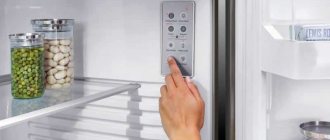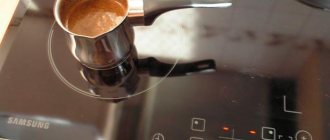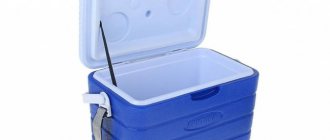In addition to its main purpose - grinding coffee beans, a coffee grinder found in every home is often used to grind other products. In this article, we will tell you what rules should be followed so that the extended use of the device does not radically shorten its service life and, when grinding, the quality characteristics of the crushed products are preserved. If the design, power and materials from which the device is made allow it to be used for grinding other products, manufacturers usually indicate this in the instructions. Millstone coffee grinders have the most universal design. This is due to the ability to adjust the degree of grinding. The device can be configured to produce different fractions of the product. Owners of a rotary (or blade) electric coffee grinder should take into account the power of the device and the quality of its knives. The degree of grinding will have to be adjusted by eye, depending on the period of operation of the device. If you want to get a coarser grind, the product will be crushed unevenly.
What kind of coffee grinders are there?
Coffee grinders are divided into:
- Rotary (rotary) or knife, as they are also called.
- Millstones.
- Manual.
The first two varieties are electric, but their operating principles are different. The manual device is more reliable, but requires time and effort to grind the products. It is very difficult to grind coffee beans by hand - you need the coffee grinder to have a comfortable handle and not cause calluses during daily use.
Important! Coffee grinders are designed for coffee beans, so you can grind other products in them with great care, following the instructions. If the device is under warranty, the service will refuse to repair it for free, since the user himself caused damage to the electrical device.
Blender
A blender is a device whose main function is mixing and grinding products. Blenders also come in different types: stationary and submersible. An immersion blender is a handle with controls attached to a leg with knives. It is lowered into a bowl of products, and mixing occurs there. In order to grind any product, the kit must have a special bowl with knives for grinding.
Stationary is a device in which a bowl with knives is placed on a stand with a motor, into which the product is loaded. As a rule, such blenders are not used for chopping food. They are used for making soups, purees and cocktails. Grinding anything in them is extremely problematic.
immersion blender
How it works and where to use the rotary
The principle of operation of a rotary coffee grinder is to quickly move the knives - one or two, depending on the model. There are removable and non-removable knives. In the second case, they cannot be removed and cleaned, so you need to use them carefully and only within the limits of what is permitted.
Products that are placed in a knife grinder are cut. This is the advantage of the rotary device - more aromatic substances remain in small particles, since they are not compressed, but dissected. Essential oils also remain inside.
What can you do with this type of coffee grinder? The coffee grinder is intended for grains and spices, as well as:
- cereals that are low in fat, such as oatmeal or buckwheat;
- breadcrumbs;
- pieces of chocolate, but you need to act impulsely so that the device does not overheat and melt the sweets;
- flax seeds, sesame seeds;
- nuts, but not walnuts, as they contain a lot of fat.
If products contain oil, they are partially crushed so that the pieces are larger and the liquid fraction does not flow onto the coffee grinder bearing.
A rotary coffee grinder is not designed for powdered sugar - this can damage it forever. Why you can’t grind sugar in a rotary coffee grinder: the crystals quickly melt when heated, turning into caramel. Burnt sugar drips onto the internal parts of the device and hardens on them. The knives will no longer be able to rotate, especially if the device is non-separable.
Recipe
- Before grinding, the coffee grinder should be thoroughly washed and dried with a paper towel . If particles of previously ground products remain on its walls, they will get into the powder and ruin both its appearance and taste. Coffee aromas are absorbed especially quickly.
- Pour the required amount of sugar into the coffee grinder and grind for 1 minute .
- Sift the resulting powder through a fine strainer . This will help remove large sugar crystals.
- Powdered sugar is a hygroscopic product. This means that it quickly absorbs moisture and clumps. Therefore, it should be stored in a glass jar with a tightly screwed lid, at temperatures up to 40 degrees above zero and at a humidity of no more than 75% .
Attention! To prepare powdered sugar, you can use not only a coffee grinder, but also a blender.
The principle of operation of millstones
Millstone devices have a different operating principle. Two rollers rotate towards each other and everything that falls between them is crushed. The degree of grinding depends on how close the millstones are set. If you often make Turkish coffee at home, set the grind to the finest setting. For other products, such strong grinding may not be useful.
There are two types of millstones - conical and cylindrical. The first ones cope with all products, do not overheat, do not overcook them. The latter can be more finely tuned for coffee, but it is not advisable to add all other ingredients. Firstly, the smell remains, and secondly, the particles stick between the millstones and interfere with their normal operation.
What can you grind in a burr coffee grinder:
- cereals;
- seeds;
- beans - coffee and cocoa, as well as peas and beans;
- crackers;
- sea salt;
- spices;
- dry herbs.
Very hard components should not be ground with millstones - this will cause their edges to wear off and fail.
What products can be ground in a knife grinder?
There are two types of ingredients that can be ground in a blade coffee grinder:
- dry;
- fatty.
In the first case, the device successfully copes with the task. In the second, you need to act more carefully: press the start button pulsed. This way the motor does not overheat. The coffee grinder for nuts and spices is used in economical mode.
How prohibited to use
An electric blade coffee grinder for powdered sugar is not used so that you don’t have to buy a new one. It is advisable to dry the cereals before chopping so that they do not stick to the knives and internal parts - this way you can extend the service life of the device.
Someone tries to beat cold whites in a knife coffee grinder, although it is not intended for liquid products at all and after this procedure it immediately breaks or burns out.
Poppy seeds, which are ground for kutya, contain a lot of fat. It is difficult to grind them efficiently in a rotary device - for this there are special hand-held devices - grinders.
The principle of action is rubbing poppy seeds. Is it possible to grind nuts in a coffee grinder if it is a blade grinder - it is possible if the knives are then removed, washed and dried. If the model is non-separable, it is better to use a blender.
What is nut flour made from?
Nut flour is finely ground nuts and is prepared from the cake that remains after the production of nut butter. The cake is dried with hot steam and nut flour is obtained. In this case, nuts can be either roasted or raw, which affects the taste and nutritional properties of the flour. Basically, nut flour is made from peanuts, almonds, hazelnuts, cashews, pistachios, walnuts and pine nuts, and sometimes ground seeds and dried fruits are added to it for taste. If you use pistachios, use unsalted or lightly salted nuts - these can be found in stores. Nut flour is very healthy because it contains proteins, vitamins, minerals and fatty acids, improves the functioning of the heart, liver and kidneys, does not contain harmful cholesterol, strengthens the immune system and restores strength after heavy physical activity.
In cooking, nut flour is used as a tasty and aromatic thickener for sauces and doughs; it is added to yoghurts, salads, snacks and hot dishes; porridges and desserts are prepared with it. Walnut flour gives dishes a subtle nutty aroma, exquisite taste and increases their vitamin value.
What can be put into a millstone device?
What can you grind in a burr coffee grinder besides coffee beans:
- Spices – chili, black pepper, cinnamon sticks, vanilla, cardamom, mustard seeds.
- Seeds – flaxseed, sesame, sunflower, pumpkin.
- Horseradish and garlic in dry form.
It is recommended to heat the spices a little in a frying pan or in the oven to warm up the essential oils - then they will be more fragrant.
Is it possible to grind grain with a coffee grinder? Yes, it has little fat and is dry enough to stick to the parts. The cone model, which is often chosen for cereals and coffee at the same time, copes with any product.
Is it possible to grind nuts if the millstones are conical: it is possible, since they do not overheat, but immediately go into the compartment for crushed products. If you frequently grind walnut kernels, you will have to disassemble and clean the millstones more often, especially if they are metal, so as not to rust.
What can't be crushed
Components that are too hard should not be placed into the millstones. These can be seeds to make a tincture for treatment. Sharp edges can even damage metal if you frequently grind prohibited ingredients.
Each device comes with instructions that tell you what can and cannot be put into this particular device. Considering the cost of millstone devices, and they are several times more expensive than rotary ones, it is recommended to find the section regarding products in the instructions and study it well.
To determine whether it is possible to grind cereals in a coffee grinder, you need to know the power of the device. It may only be intended for coffee beans. Even among coffee, there are varieties that are much harder than others, as they grew in mountainous areas with low oxygen levels. These are expensive varieties and require a more powerful grinding device.
Manual device for grinding food
Is it possible to make powdered sugar in a coffee grinder if it is manual? It is in manual models that this can be done safely. The rotation speed of the knives is low, so the crystals do not overheat, melt or turn into caramel. The process takes longer, but the powdered sugar in the coffee grinder turns out crumbly. It is also possible to check the degree of grinding.
In addition to grinding sugar, manual models have many advantages:
- The coffee powder can be adjusted to any grind level.
- The grains do not overheat and do not become bitter when cooked.
- One bookmark is enough for one serving so that essential oils do not oxidize in the air.
The cost of a manual coffee grinder is quite affordable, and replacement parts are on sale - if necessary, you can buy replacement knives.
How to grind coffee without a coffee grinder
A blender is a universal device that can be used instead of a coffee grinder. For a blender to cope with grains, it must have 4 blades, at least 2, but then the degree of grinding will be coarse.
This powder is not suitable for Turkish coffee - you will have to brew and infuse it to make the drink invigorating. The fact is that caffeine is extracted better and faster if the coffee is ground into dust.
There are several negative aspects when using a blender as a coffee grinder:
- you need to close the container, otherwise the grain will scatter throughout the kitchen;
- knives wear out quickly - they will have to be sharpened.
As an option, you can use a coffee blender temporarily, for example, while the coffee grinder is being repaired.
A meat grinder is the second way to grind grains. It is advisable that it be used only for grains. Knives are selected for the finest grinding. Both manual and electric models are suitable.
A hammer, as well as a bag and a towel, can grind grain just as well as a blender. This method will work temporarily: put the coffee in a bag and wrap it in a towel, then tap it well with a hammer. The grinding will be uneven, but it is quite suitable for a French press or geyser coffee maker.
Which is better - a blender or a coffee grinder?
These two devices are designed for different actions, so you can replace one with the other temporarily. It’s better to have both in your household than to buy and constantly use, for example, a blender. Repairing knives or buying new ones will cost more.
It is better to use a coffee grinder for cereals less often, but grinding wheat or oatmeal in a blender will be faster and safer. The same goes for nuts and sugar.
Types of grinding
Each method of preparing a coffee drink has its own type of grinding. It all depends on the duration of extraction (the release of all its microelements from the coffee body using a certain water temperature) in a particular brewing method. Even if you grind coffee beans at home using improvised objects, you can get an aromatic and tasty coffee drink.
There are such types of grinding as:
- large (rough);
- average;
- thin;
- ultrafine (extra-fine, powdery).
Classification of coffee grinding
For brewing in a French press or vacuum coffee maker, use coarse grinding . Visually, it is similar in size to breadcrumbs. A drink made from this type of grinding does not differ in strength and richness in taste.
A medium grind is, in most cases, versatile because it can be used in many brewing methods. It is similar in size to sugar. Such crushed beans are suitable for preparing drinks in a drip coffee maker, Chemex, geyser coffee maker, or professional (carob) coffee machine. Each type of brewing will have a different taste of coffee.
Fine grinding is used to prepare coffee in a pour over, Aeropress, some drip coffee makers, and special coffee machines for making espresso. Externally, it is similar in size to Extra salt.
Ultra-fine grinding of coffee beans is ideal for making coffee in a Turk, as well as for brewing in a cup. The ground particles are similar in size to powdered sugar. Turkish coffee has a rich, strong taste. The most caffeine is found in Turkish coffee.
Do not forget that the same type of coffee can open differently - this is influenced by the degree of grinding and the method of preparing the drink.










